Landschlacht, Switzerland, 10 January 2018
Those who do not learn from history are doomed to repeat it.
I am reminded of this more and more these days as I watch events unfold again and again around the globe that suggest the politicization of society remains an ongoing clear and present danger.
Politicization is, at least to my way of thinking, a process where tradition and excellence are replaced by ideology and illusion.
Take, for example, two stories from the 8 January edition of the New York Times:
Windsor, England
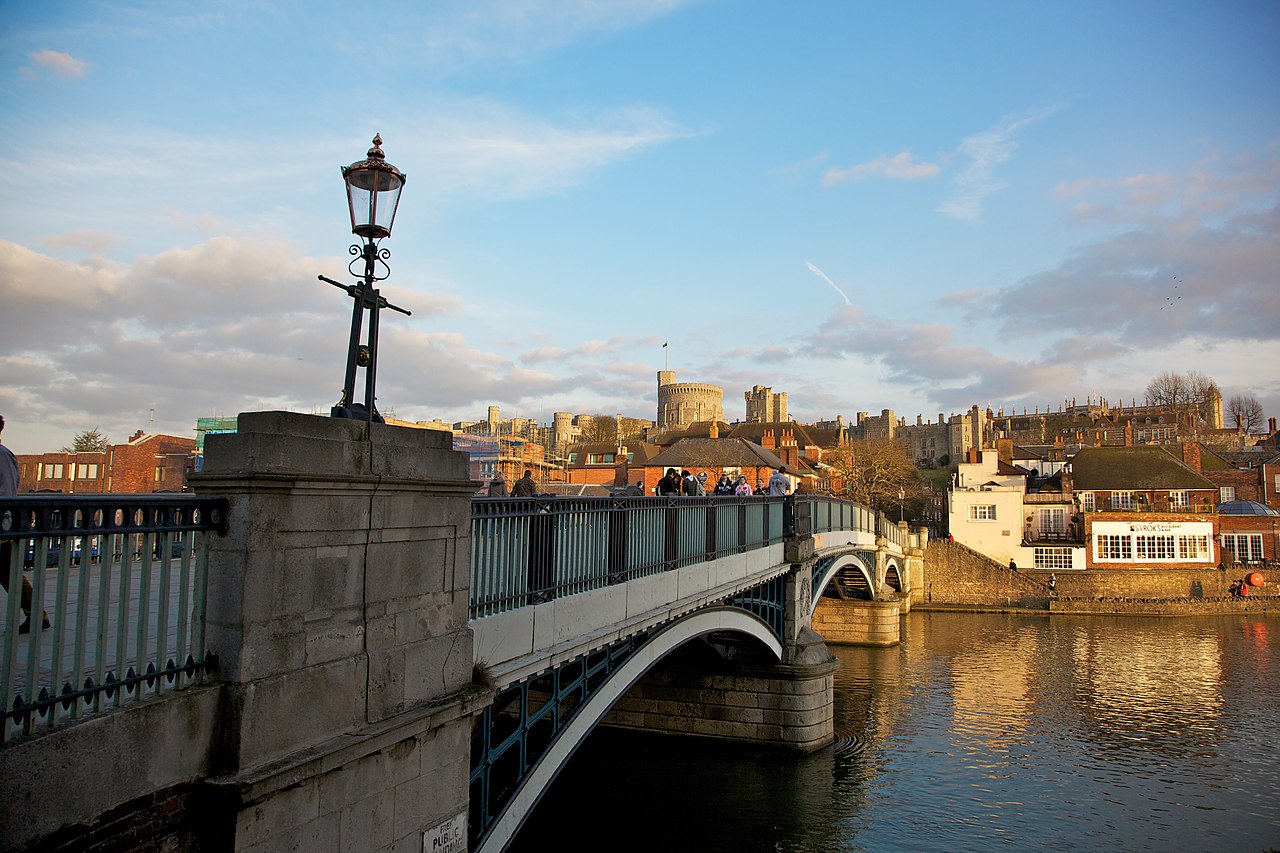
Since Prince Harry and Meghan Markle announced their wedding date last month, the council leader who oversees one of the richest boroughs in Britain has been on a campaign to deal with the homeless people who “sleep rough” near the wedding venue, Windsor Castle – all eight of them, according to official statistics.

Simon Dudley, leader of the Royal Borough of Windsor and Maidenhead, wrote to the Thames Valley Police last week, demanding that they use their legal powers to tackle the issue of “aggressive begging and intimidation” before the royal wedding on 19 May.
Last month, while on ski vacation in Wyoming, Dudley tweeted – (Why do we give tweets so much damn influence anyway?) – about an “epidemic of rough sleeping and vagrancy in Windsor”, which he says paints the historical market town in an “unfavourable light”.
His description of “bags and detritus” accumulating on the streets – (Sounds like my apartment!) – and “people marching tourists to cash points to withdraw cash” suggested that homeless people had somewhat taken over the quaint streets of Windsor.
But while Britain has a big homelessness issue, with 1 in every 200 people in England currently without a home, there are just 8 homeless people in all of Windsor and Maidenhead, the government says.
Local charities say the official figures may not fully capture the extent of the problem, because a number of people, known as the “hidden homeless”, beg on the streets by day and spend their nights in temporary accommodations for extended periods.
The Thames Valley Police say they deal with occasional reports of begging in the area but have not had any reports of anyone being marched to cash points to take out money.
(I will say that I have seen beggars begging near cash points but the only thing compelling me to assist them was my own conscience and not any overt intimidation from them.)
To quote some of the people interviewed by Ceylan Yeginsu:
“I think that (Dudley´s) comments are rude and heartless.
If they are going to move us, it should be into a permanent home, not out of sight for a day just so that rich people can throw a party.”
“They are making us out to be criminals, a public safety hazard.
What´s all that about?
We don´t bother anybody.
We don´t go up on anyone.
We just take whatever we are given.”
“The unpleasant sight is not what is shameful here.
It´s the fact that we are not providing these poor people with warm homes in the middle of winter.”
“People sleeping on the street don´t do so through choice.
They are often at their lowest point, struggling with a range of complex problems and needs, and they are extremely vulnerable, at risk from cold weather, illness and violence.”
To the mind of Dudley what matters most is not the tradition and excellence of character showing compassion and charity to those in genuine need and distress but rather it is the illusion of pretending that there is no homelessness issue in Windsor.
Haworth, England
Above: Bronte Parsonage Museum, Haworth
Should a 30-year-old supermodel help lead a celebration of the 200th anniversary of the birth (30 July 1818) of Emily Bronte?

Above: (from left to right) Anne, Emily and Charlotte Bronte
That question is at the crux of a row that broke out after the Bronte Society in Britain, one of the world´s oldest literary societies, anointed Lily Cole a “creative partner” for the upcoming festival celebrating Emily´s life.

Above: Lily Cole
The colloboration, announced last week, spurred a Bronte biographer and Society member to write a scathing blog post denouncing it as a “rank farce”.
“What would Emily Bronte think if she found that the role of chief “artist” and organizer in her celebratory year was a supermodel?”, the biographer Nick Holland asked.
Above: Nick Holland
Holland said Cole´s appointment smacked of a desire to be “trendy”.
Based on what I have read about Lily Cole, though she may be compassionate and intelligent in her own way, whether she is sufficiently qualified and knowledgeable enough to properly respect the literary tradition of this great writer remains doubtful to me.
It seems that the Society is more interested in attracting people to the celebration through the use of Cole´s beauty and celebrity than they are in demonstrating the excellence and tradition of Bronte´s writing.
And whether simply being beautiful qualifies a person as being sufficiently competent is a prickly issue.
For it begs the question:
Can a woman be both beautiful and competent, rather than being exclusively one or the other?
I believe that a woman can be both, but I don´t think a woman should necessarily be considered competent or incompetent because she is beautiful or not.
Cole should be judged on her knowledge of Bronte´s writing and her academic record in literature, neither of which seems to dominate her resumé.
It seems that tradition and excellence is being superseded by the illusion that all a woman needs are looks to be successful, rather than intelligence, experience or merit.
And I still remain skeptical of the value that a model serves society when basically her primary role is to walk up and down a catwalk like a living clothes hanger showing clothing that she had no hand in creating to a small minority of people who can afford the clothing being demonstrated.

In a world crying for equal respect to be paid to women, can we not find a woman who is more than a pretty face and praise her for her intelligence and insight instead of her ability to artistically apply make-up to anorexic cheekbones?
Isn´t that the point of celebrating Emily Bronte, in that we are praising her for the merits of her literature rather than for the accident of her gender?
(For more on the Bronte sisters, please see That Which Survives of this blog.)
The United States
Let´s look at science and truth and the disdain with which the present Administration has for these concepts.
If the facts do not support the present political agenda then they are dismissed as fake.
The illusion that the government is infallible is preferred over the tradition of hard work and the excellence of research.
An entire community of scientists can scream until they are blue in the face that global warming is real and a danger to the continued existence of this planet and that they have the facts and research to prove it, but this is considered nonsense and invalid with a simple 5 am barely literate tweet by the President.

Above: Donald Trump, the Twit of Twitter
Nazi Germany, 1935 – 1939

On 1 April 1935 Arnold Sommerfeld achieved emeritus status at the University of Münich.

Above: Arnold Sommerfeld (1868 – 1951)
However, Sommerfeld stayed on as his own temporary replacement during the selection process for his successor, which took until 1 December 1939.
The process was lengthy due to academic and political differences between the Munich faculty’s selection and that of both the Reichserziehungsministerium (REM, Reich Education Ministry) and the supporters of Deutsche Physik.
In 1935, the Munich faculty drew up a candidate list to replace Sommerfeld as ordinarius professor of theoretical physics and head of the Institute for Theoretical Physics at the University of Munich.

Above: Seal of the University of Munich
There were three names on the list: Werner Heisenberg, who received the Nobel Prize in Physics in 1932, Peter Debye, who would receive the Nobel Prize in Chemistry in 1936, and Richard Becker — all former students of Sommerfeld.
The Munich faculty was firmly behind these candidates, with Heisenberg as their first choice.

Above: Werner Heisenberg (1901 – 1976)
However, supporters of Deutsche Physik and elements in the REM had their own list of candidates and the battle commenced, dragging on for over four years.
During this time, Heisenberg came under vicious attack by the supporters of Deutsche Physik.
One such attack was published in Das Schwarze Korps, the newspaper of the Schutzstaffel, or SS, headed by Heinrich Himmler.
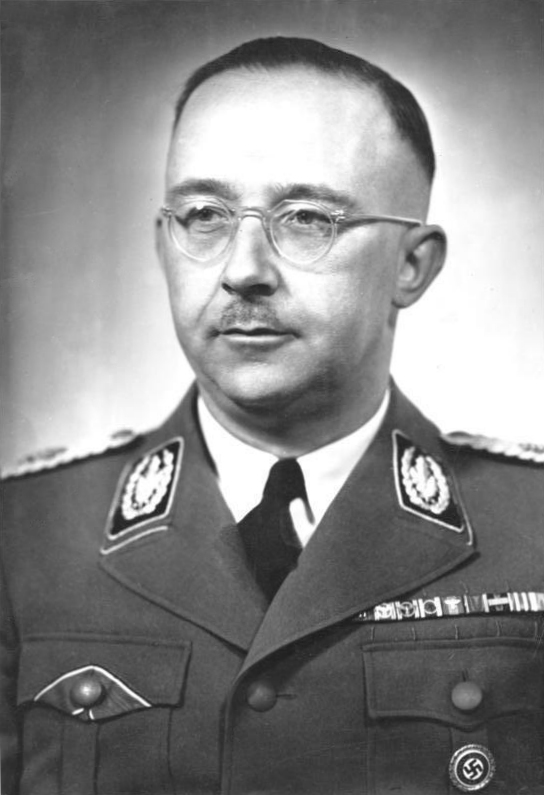
Above: Heinrich Himmler (1900 – 1945)
Heisenberg had been lecturing to his students about the theory of relativity, proposed by the Jewish scientist Albert Einstein.
In the editorial, Himmler called Heisenberg a “White Jew” who should be made to “disappear.”
These verbal attacks were taken seriously, as Jews were subject to physical violence and incarceration at the time.
Heisenberg fought back with an editorial and a letter to Himmler, in an attempt to get a resolution to this matter and regain his honour.
At one point, Heisenberg’s mother visited Himmler’s mother to help bring a resolution to the affair.
The two women knew each other as a result of Heisenberg’s maternal grandfather and Himmler’s father being rectors and members of a Bavarian hiking club.
Eventually, Himmler settled the Heisenberg affair by sending two letters, one to SS-Gruppenführer Reinhard Heydrich and one to Heisenberg, both on 21 July 1938.
In the letter to Heydrich, Himmler said Germany could not afford to lose or silence Heisenberg as he would be useful for teaching a generation of scientists.
To Heisenberg, Himmler said the letter came on recommendation of his family and he cautioned Heisenberg to make a distinction between professional physics research results and the personal and political attitudes of the involved scientists.
The letter to Heisenberg was signed under the closing “Mit freundlichem Gruss und, Heil Hitler!” (“With friendly greetings and, Hail Hitler!”)
Overall, the settlement of the Heisenberg affair was a victory for academic standards and professionalism.
However, the replacement of Sommerfeld by Wilhelm Müller on 1 December 1939 was a victory of politics over academic standards.
Above: Wilhelm Müller (?) (1880 – 1968)
Müller was not a theoretical physicist, had not published in a physics journal, and was not a member of the Deutsches Physikales Gesellschaft(DPG, German Physics Society).
His appointment as a replacement for Sommerfeld was considered a travesty and detrimental to educating a new generation of theoretical physicists.
The Nazis preferred the illusion – the ideology that scientific knowledge could only be disseminated by those of “pure Aryan blood” and “proper thinking” – over academic excellence achieved through merit.
Werner Heisenberg, known as the father of quantum physics, won his Nobel Prize for postulating his now-famous uncertainty principle which, in the simplest terms that I understand, says that the more precisely position of some particle is determined, the less precisely the momentum of the particle can be known, or vice versa, the more precisely the momentum of a particle is known, the less precisely the position can be determined.

I am no physicist and I will be damned thrice if I could properly explain the principle in any significant way, but in my own personal psychology I find the more settled a person is, the less precise his progress will be, and vice versa, the more progressive a person is, the less precise the position he holds.
If one does not travel physically or intellectually beyond one´s comfort zone, the less certain it is that the person can evolve beyond their stage of stagnation.
The more one travels physically or intellectually, the less certain he/she will be about maintaining an inflexible position on any given topic, for the exposure to new ideas offers the mind the suggestion of infinite possibilities in infinite combinations.
Travellers can nonetheless be fooled by illusion overwhelming our common sense.
Three incidents come to mind in my own personal travels.
Niagara Falls, New York, 1990

I couldn´t resist..
I had visited the Canadian Niagara Falls so I was understandingly curious to compare how the American Niagara Falls looked.
Misty spray, mighty roar, majestic scale, marvelous spectacle, I was one of millions of people who have invaded the Niagara River area that splits the land into two separate nations.
Long before tourists came, Seneca natives populated the area.
In 1678 they led the French priest Louis Hennepin (1626 – 1704) to the Falls.

His description was widely read in Europe:
“The universe does not afford its parallel.”
The Falls have attracted daredevils, including the Great Farini, who used barrels and tightropes and various contraptions in attempts to go over the Falls.
(For a description of the Great Farini, please see Canada Slim and the Lamp Ladies of this blog.)
Only some survived.
Honeymooners arrive (starting with Napoleon III) in the thousands, despite jokes that the Falls will be the first (or second) disappointment of married life.
To keep tourists and their dollars for longer than it takes to view the Falls, the American side has parks and attractions like its Canadian counterpart does, but – national pride aside – I believe the Canadians have done it better.
I tried visiting the New York side of the River by crossing on foot the Rainbow Bridge that spans the expanse between the nations.

I was refused.
So I opted for the Greyhound bus entry, then played the tourist.
I viewed the American Falls, took the Prospect Point Observation Tower elevator, crossed a bridge to Goat Island to view Terrapin Point and the Three Sisters Islands in the upper rapids, and descended to the Cave of the Winds where walkways go within 25 feet of the cataracts.
The town itself with over 60,000 people struck me as a grimier and grittier place as compared to the Ontario town of 75,000 people and a visit to nearby Buffalo made me think of the Gotham City as presented by Tim Burton´s Batman movie.

As historic as Buffalo´s Erie Canal and railroads may be, as fine as some of Buffalo´s buildings and parks are, the city felt like one huge Crime Alley, the downtown isolated and almost deserted.
Buffalo was in the 1990s a working class town known by me for only two things: the Buffalo Bills (who never seem able to win a Super Bowl) and the Anchor Bar´s Buffalo wings (deep-fried chicken wings covered in a spicy Sauce and served with blue cheese dressing and celery).

I ate the wings and boarded a bus back to Niagara Falls, New York and then waited in the bus terminal for a bus back over the border.

I was approached by a stranger.
I never understood racism or racial profiling, for I can never forget the family vacation I took a decade previously when we were on a freeway outside of Chicago and an ebony family in a long station wagon passed alongside us.
My foster mom shrieked and insisted we bolt our doors and windows.
The family, except for the darker hue of their skin, were no more dangerous than a Norman Rockwell painting, and we were travelling together at a speed of 60 miles per hour on a crowded highway.
It was illogical, irrational and emotional.
I had seen few black people before visiting the States and those I had met were quite decent and civil individuals, so I couldn´t understand why the extreme fear demonstrated by my foster parent.
Maybe Canadians are exposed to too much American TV?
When I was approached by a black man about my age (I was in my 20s then.) I felt neither fear nor suspicion.
He gave me a song and dance about how he needed to get back home to Los Angeles but couldn´t afford the bus fare.
He gave me a LA business card of what he said was his current employer.
His manner seemed sincere, but as a last measure of caution I bought his ticket ensuring that it was non-refundable and could only be redeemed as a bus ticket.
Time passed.
I contacted his LA employer who informed me that the young man had indeed worked for them but had quit their employ before he asked me for bus fare.
To my own surprise I was neither angry nor disappointed.
I might have been scammed but I proved to myself that I could be a generous person.
Maybe my action resulted in his returning to LA or perhaps he managed to convince another hapless traveller to buy his ticket, still he must have needed the money or he wouldn´t have done the scam.
I wish him well, though I doubt he would remember me.
Barcelona, Spain, 25 May 2007

On vacation with my wife, a week in this self-confident and progressive capital of Catalunya, Barcelona was and ever shall remain a city vibrating with life and excitement.
It is a thriving port and a prosperous commercial city that one could easily spend one´s entire life in and yet barely scratch its surface.
Superb museums, Gothic and modernista architecture, world famous ramblas, beautiful beaches, beckoning promenade, every day felt like a fiesta.

We soaked in Picasso, Joan Miró and Antoni Gaudí.
We strolled, we browsed, we listened to buskers and watched street Performers.
The energy of Barcelona was and still remains boundless.
We sunbathed, we swam, we ate, we drank as if there would be no tomorrow.
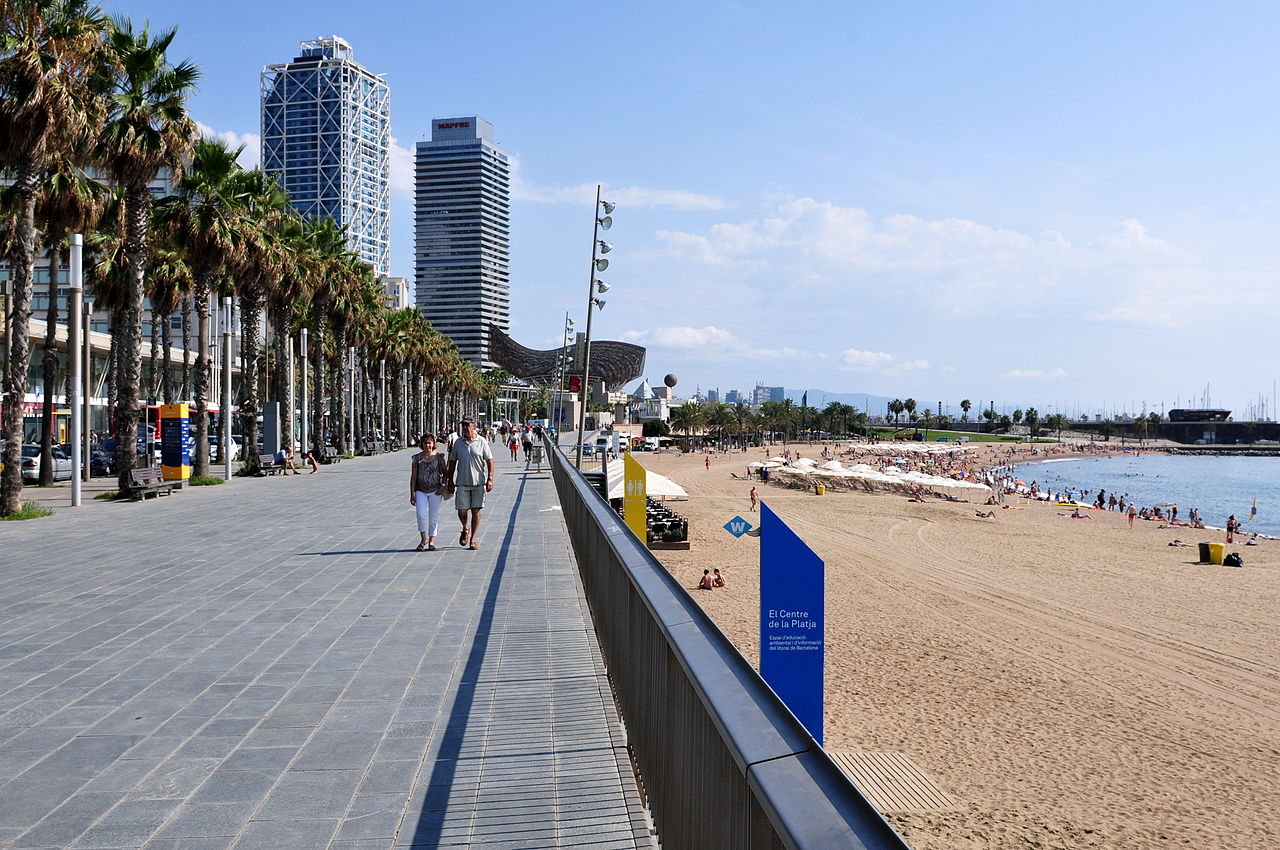
We wandered the streets of Barcelona day and night unafraid, lost in a kaleidoscope of colours and a garden of smells, lost in a warren of broad boulevards and ancient and narrow streets, lost in our own private flight of fancy, seeing only joy and elegance all around us.
We did not see the dirt and neglect that is also Barcelona´s seedier side.
We did not see poverty, for we chose to be blind to it.
We did not see drug use, for we were high already on the wine of each other´s company and the intoxicating nature of our vacation playground.
Was there danger lurking the flanks of the ramblas?
Should we have locked our passports, tickets and wallets inside the safe of our hotel room?
Should we have kept our backpacks beneath our feet as we poured endless sangrias down our gullets?
Were there pickpockets and bag snatchers hungry for the wealth we had and they did not?
Perhaps.
Yet fear is forgotten, for hidden down alleys little changed for centuries are tapas bars, in gentrified old town quarters are designer boutiques, in workers´ taverns bargain lunches.
Gourmet restaurants, craft outlets and workshops, fin de siècle cafés, restored palaces, neighbourhood markets and specialist galleries, and that wonder of wonders, that miracle of miracles, Gaudí´s labour of love the Sagrada Familia.

Where is the fear?
Where is the danger?
We climbed a hillside, after midnight, intimately intoxicated.
Two men approach us, claiming to be plain clothes policemen.
My wife is German, so her instinct is to be lawabiding and obedient to figures of authority.
I am Canadian with a healthy trust in law and order common to a country where – unlike our neighbours to the south where settlement arose then the law followed, we sent the law out first then settlers followed – it is assumed that those who regulate our lives do it in our best interests rather than their own.
(Naive, perhaps, but preferable to paranoia.)
Perhaps it was Niagara Falls that remained with me, but there was something about the set-up, the whole approach, that smelled bad, felt wrong.
They demanded to see our passports.
I categorically refused.
My wife was concerned, ready to be compliant.
But I was unwilling to budge.
Their badges were too quickly opened and closed to be read distinctly in the midnight lamplight.
I felt a bravado that only alcohol can provide.
I was prepared to defend my fayre maiden even had they been armed to the teeth.
I was curiously unafraid and completely certain of my stance.
I told them I thought they weren´t policemen and I brushed them aside as I dragged my wife down the street with me.
They did not follow.
Whether they were cops or crooks, they were too amateur to want to tackle a man twice their height who refused to be intimidated.
I should have been scared.
I still don´t understand why I wasn´t.
London, England, 24 October 2017

The Soho district has a historic reputation for tolerance.
No matter how dour daily life may be or how depressingly dull politics may become, Soho is a refuge from the rigours of reality.
Here the artistic assemble and the groups gather.
Here the media IS the message, the film is the fantasy, the advertised the attraction.
Life in high profile, in coats of many colours.

There is nowhere else in London where diversity in infinite forms congregates and clashes: businessmen boast, drunks drop, theatre goers critique, fashion leaps and falls, markets never seem to close, pimps, prostitutes and police patrol.
This is the best of times.
This is the worst of times.
A place where the song “There´s Gonna Be a Heartache Tonight” seems fitting.
We are drawn to the lights and sounds like moths to flames, for we are tourists.
We wonder if one can be sober and a teenager at the same time here.
And is everyone getting married tomorrow?
Here a stag party, here a hen party, here a drunk, there a drunk, everyone´s a drunk, drunk.
Ol´ Macdonald went to Soho, e-i-e-i-ohhh!
Sadly the wedding invitations will be as lacklustre as the imagination that went into the wandering about the streets from pub to pub the night before.
Are you not entertained?
It felt like a full day: the Churchill War Rooms (Would the man who would fight on the beaches and in the streets have defended Soho?), the Household Cavalry Rooms, Westminster Cathedral, the Florence Nightingale Museum….
Enough of the mighty and the martyrs, the pomp and pomposity, we wanted to pump passion into our veins and colour into our consciousness.
We find ourselves on Charing Cross Road, T.S. Eliot territory, where the American Eliot spent much of his time retreating from his English wife Vivienne.
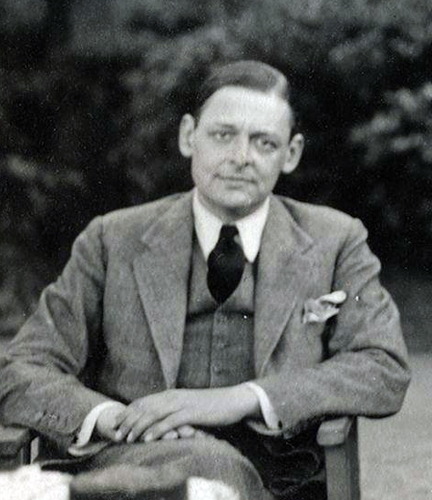
Above: Thomas Stearns Eliot (1888 – 1965)
Their marriage was markedly miserable, in part because of Viv´s health.
In a letter to their mutual friend Ezra Pound, Vivi complained of having a high temperature, fatigue, insomnia, migraines and colitis simultaneously.
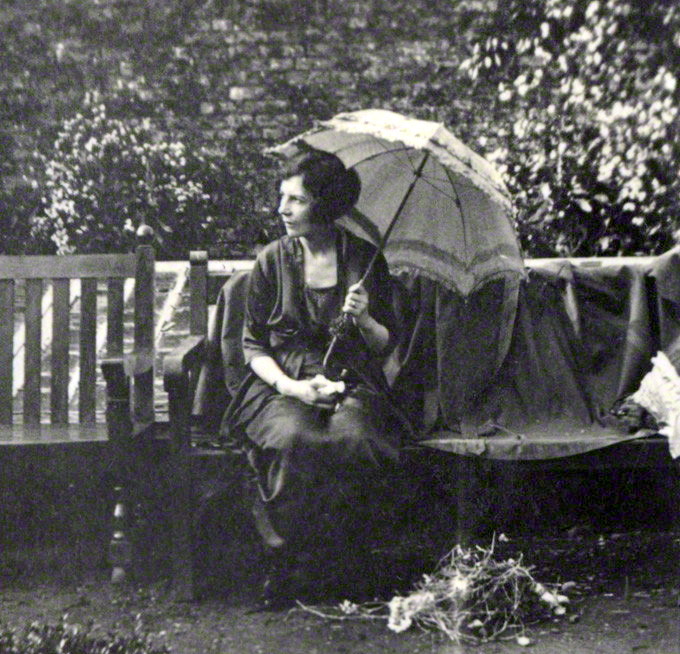
Above: Vivienne Haigh-Wood Eliot (1888 – 1947)
Eliot retreated so often from his wife that Viv would eventually resort to marching up and down Charing Cross Road wearing a sandwich board bearing the slogan:
“I am the wife that T.S. Eliot abandoned.”
She was later diagnosed with mental instability and spent her remaining years in an asylum.
Is that what it means for a European to be married to a North American?
My poor wife.
We find ourselves wandering aimlessly trying to locate a restaurant listed in her Müller guide to London when in front of Wyndhams Theatre two young ladies in their 20s approached us.

Would we like two free tickets to see the show about to begin?
Cautiously, we accept.
One of the ladies, her name written in ink on our tickets, Miranda Banfield had received four free tickets through her workplace and two of the ladies cancelled at last moment.
The show was Heisenberg: The Uncertainty Principle, our seats next to theirs.
To relieve their anxiety I opted to keep Ute between myself and them.
We were plesantly distracted and immensely grateful for the generosity.
Heisenberg is the story of Georgie Burns (Anne-Marie Duff), a 42-year-old American and Alex Priest (Kenneth Cranham), a 75-year-old English butcher, who meet in a London railway station.
They begin a romantic relationship and eventually travel to New Jersey to search for Georgie´s missing son.
Had we been sceptical of Miranda´s unexpected kindness we might have missed out on a magical moment of theatre.
Miranda and her companion did not expect or ask for further contact or remuneration and we parted ways pleasantly after the show.
We had progressed over the years and were less certain about categorizing people into distinct categories of good and bad.
Stranded strangers could be legitimate or could be liars.
Men on midnight streets could be cops or conmen.
Generosity could be genuine and gratefully accepted.
Life is uncertain.







